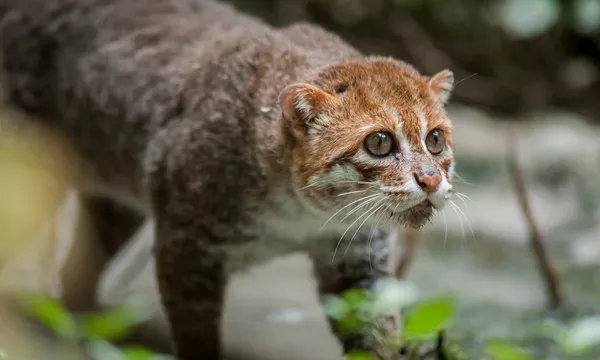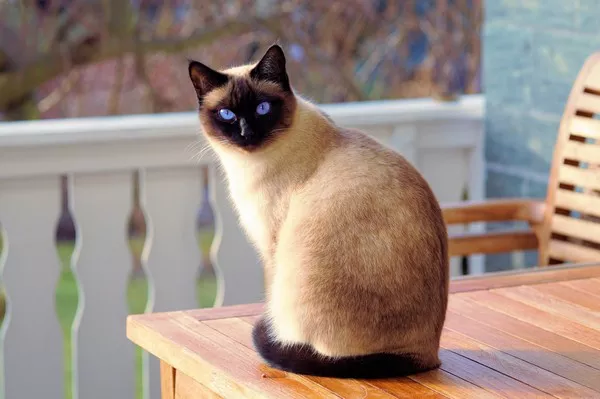Cats are not just pets; they are family members who bring joy, comfort, and companionship to our lives. However, like humans, cats can experience mental health issues that affect their well-being and behavior. Recognizing and addressing these issues is crucial for ensuring a happy and healthy life for your feline companion. This essay explores the common mental health problems in cats, their symptoms, causes, and management strategies. By understanding these conditions, cat owners can provide the necessary support and care to help their cats thrive.
1. Anxiety and Stress
Anxiety and stress are prevalent mental health issues in cats. These conditions can manifest in various ways and are often triggered by environmental changes, social interactions, or physical discomfort.
Symptoms:
Excessive grooming or hair pulling
Hiding or avoidance behaviors
Aggression towards people or other pets
Excessive vocalization
Loss of appetite
Changes in litter box habits (urinating or defecating outside the box)
Restlessness or pacing
Trembling or shaking
Causes:
Environmental Changes: Moving to a new home, rearranging furniture, or introducing new pets or people can cause stress.
Social Isolation: Cats are social animals and can become anxious if they lack interaction with their owners or other pets.
Health Issues: Pain, illness, or discomfort can lead to anxiety and stress.
Trauma: Past negative experiences, such as abuse or neglect, can leave lasting emotional scars.
Genetics: Some cats may be predisposed to anxiety due to their genetic makeup.
Management:
Stable Environment: Maintain a consistent routine and provide a calm, predictable environment. Avoid sudden changes and loud noises.
Safe Spaces: Provide safe spaces where your cat can retreat when feeling stressed, such as a quiet room or a cozy hideaway.
Enrichment Activities: Offer plenty of toys, scratching posts, and climbing structures to keep your cat mentally and physically stimulated.
Interactive Play: Engage in interactive play sessions to build trust and reduce anxiety. Use toys that mimic prey, such as feather wands or laser pointers.
Calming Products: Consider using calming aids like pheromone diffusers, herbal supplements, or anxiety wraps. Consult your veterinarian before using any products.
Professional Help: If your cat’s anxiety persists, consult a veterinarian or a certified animal behaviorist for professional guidance and treatment options.
2. Depression
Depression in cats is often overlooked but can significantly impact their quality of life. Cats can become depressed due to various factors, including changes in their environment, loss of a companion, or underlying health issues.
Symptoms:
Loss of appetite
Lethargy or decreased activity
Withdrawal from social interactions
Excessive sleeping
Lack of interest in favorite activities
Changes in grooming habits (over-grooming or neglecting grooming)
Weight loss or gain
Causes:
Loss of a Companion: The death of a human or animal companion can lead to grief and depression.
Environmental Changes: Major changes, such as moving to a new home or a change in household dynamics, can trigger depression.
Health Issues: Chronic pain, illness, or medication side effects can contribute to depressive symptoms.
Loneliness: Cats that are left alone for extended periods may become depressed due to lack of social interaction.
Genetics: Some cats may be more susceptible to depression due to their genetic makeup.
Management:
Consistent Routine: Maintain a consistent daily routine to provide a sense of security and predictability.
Social Interaction: Spend quality time with your cat, engaging in activities they enjoy. Consider adopting another cat if your cat is lonely.
Enrichment Activities: Provide mental and physical stimulation through toys, puzzles, and interactive play.
Nutrition: Ensure your cat is receiving a balanced diet rich in essential nutrients. Consult your veterinarian for dietary recommendations.
Veterinary Care: If your cat shows signs of depression, consult a veterinarian to rule out underlying health issues. Medications or supplements may be recommended.
Behavioral Therapy: Work with a certified animal behaviorist to develop a behavior modification plan tailored to your cat’s needs.
3. Obsessive-Compulsive Disorder (OCD)
Obsessive-Compulsive Disorder (OCD) is a mental health condition characterized by repetitive behaviors that serve no practical purpose. Cats with OCD may engage in excessive grooming, pacing, or other repetitive actions.
Symptoms:
Excessive grooming or hair pulling
Pacing or circling
Repeatedly attacking or chasing imaginary objects
Repetitive vocalization
Fixation on certain objects or areas
Self-mutilation or self-injury
Causes:
Stress and Anxiety: High levels of stress and anxiety can trigger OCD-like behaviors.
Boredom and Lack of Stimulation: Cats that lack mental and physical stimulation may develop repetitive behaviors to cope with boredom.
Genetics: Some cats may be genetically predisposed to OCD.
Health Issues: Pain, illness, or medication side effects can contribute to OCD-like behaviors.
Management:
Enrichment Activities: Provide a variety of toys, puzzles, and interactive activities to keep your cat mentally and physically engaged.
Structured Routine: Establish a structured daily routine to reduce stress and anxiety.
Behavioral Modification: Work with a certified animal behaviorist to develop a behavior modification plan. Techniques such as counter-conditioning and desensitization can be effective.
Medications: In severe cases, your veterinarian may prescribe medications to manage OCD symptoms. Common medications include selective serotonin reuptake inhibitors (SSRIs) and benzodiazepines.
Environmental Changes: Make gradual changes to your cat’s environment to reduce triggers and provide a more enriching space.
4. Cognitive Dysfunction Syndrome (CDS)
Cognitive Dysfunction Syndrome (CDS) is a condition that affects older cats, similar to Alzheimer’s disease in humans. CDS can cause cognitive decline, behavioral changes, and reduced quality of life.
Symptoms:
Confusion or disorientation
Changes in sleep patterns (sleeping more during the day and being restless at night)
Reduced interaction with family members
Loss of litter box training
Decreased appetite
Increased vocalization, especially at night
Wandering or getting lost in familiar environments
Forgetting previously learned behaviors
Causes:
Age-Related Changes: As cats age, their brain cells may degenerate, leading to cognitive decline.
Neurological Damage: Accumulation of beta-amyloid plaques in the brain can impair cognitive function.
Health Issues: Chronic pain, illness, or medication side effects can exacerbate cognitive decline.
Genetics: Some cats may be genetically predisposed to CDS.
Management:
Environmental Enrichment: Provide a stimulating environment with plenty of toys, scratching posts, and perches. Use puzzle feeders to keep your cat mentally engaged.
Routine and Stability: Maintain a consistent routine and provide a stable environment to reduce confusion and anxiety.
Nutritional Support: Feed a diet rich in antioxidants, vitamins, and omega-3 fatty acids to support brain health. Consult your veterinarian for dietary recommendations.
Supplements and Medications: Your veterinarian may recommend supplements or medications to manage CDS symptoms. Common treatments include antioxidants, cholinesterase inhibitors, and sedatives.
Behavioral Therapy: Work with a certified animal behaviorist to develop a behavior modification plan. Techniques such as positive reinforcement and environmental enrichment can help improve your cat’s quality of life.
5. Separation Anxiety
Separation anxiety is a common mental health issue in cats, especially those that form strong bonds with their owners. Cats with separation anxiety may exhibit distressing behaviors when left alone.
Symptoms:
Excessive vocalization when left alone
Destruction of property (scratching furniture, chewing on items)
Urinating or defecating outside the litter box
Excessive grooming or hair pulling
Pacing or circling
Refusal to eat or drink when left alone
Causes:
Strong Bond with Owner: Cats that form strong attachments to their owners may become anxious when separated.
Past Trauma: Cats that have experienced abandonment or neglect may be more prone to separation anxiety.
Lack of Independence: Cats that are overly dependent on their owners may struggle with being alone.
Health Issues: Pain, illness, or medication side effects can exacerbate separation anxiety.
Management:
Gradual Desensitization: Gradually increase the amount of time you spend away from your cat. Start with short periods and gradually extend the duration.
Positive Reinforcement: Use positive reinforcement techniques to reward your cat for calm behavior when you leave. Provide treats, toys, and praise.
Interactive Toys: Leave interactive toys and puzzle feeders to keep your cat occupied and mentally stimulated.
Background Noise: Play soothing music or leave a TV on to provide background noise and reduce feelings of isolation.
Professional Help: If your cat’s separation anxiety persists, consult a veterinarian or a certified animal behaviorist for professional guidance and treatment options.
6. Aggression
Aggression in cats can be a sign of underlying mental health issues, such as fear, anxiety, or territorial behavior. Understanding the root cause of aggression is essential for effective management.
Symptoms:
Growling or hissing
Swatting or biting
Scratching or clawing
Staring or stalking
Raised fur or tail
Ears flattened against the head
Vocalization (growling, hissing, or yowling)
Causes:
Fear and Anxiety: Cats may become aggressive if they feel threatened or scared. Loud noises, unfamiliar people, or other pets can trigger fear-based aggression.
Territorial Behavior: Cats may become aggressive to defend their territory from perceived threats, such as new pets or intruders.
Pain or Illness: Physical discomfort or illness can cause cats to become irritable and aggressive.
Past Trauma: Cats that have experienced abuse or neglect may be more prone to aggression.
Genetics: Some cats may be genetically predisposed to aggressive behavior.
Management:
Identify Triggers: Identify and avoid triggers that cause your cat to become aggressive. Remove sources of stress and provide a safe, secure environment.
Desensitization and Counter-Conditioning: Work with a certified animal behaviorist to develop a desensitization and counter-conditioning plan. Gradually expose your cat to triggers in a controlled manner while rewarding calm behavior.
Positive Reinforcement: Use positive reinforcement techniques to reward your cat for calm and non-aggressive behavior. Provide treats, toys, and praise.
Environmental Changes: Make gradual changes to your cat’s environment to reduce triggers and provide a more enriching space. Use vertical spaces, such as cat trees and shelves, to create safe havens.
Veterinary Care: If your cat’s aggression is related to pain or illness, consult a veterinarian for a thorough examination and appropriate treatment. Medications or supplements may be recommended.
7. Phobias and Fears
Phobias and fears are common mental health issues in cats, often triggered by specific stimuli or situations. Cats may develop phobias due to past traumatic experiences or genetic predispositions.
Symptoms:
Hiding or avoidance behaviors
Excessive vocalization
Trembling or shaking
Dilated pupils
Rapid breathing or panting
Excessive grooming or hair pulling
Aggression towards perceived threats
Causes:
Past Trauma: Cats that have experienced traumatic events, such as loud noises, rough handling, or abuse, may develop phobias.
Genetics: Some cats may be genetically predisposed to phobias and fears.
Lack of Socialization: Cats that were not properly socialized during their kittenhood may be more prone to phobias.
Health Issues: Pain, illness, or medication side effects can exacerbate phobias and fears.
Management:
Gradual Exposure: Gradually expose your cat to the feared stimulus in a controlled and positive manner. Use treats, toys, and praise to reward calm behavior.
Desensitization and Counter-Conditioning: Work with a certified animal behaviorist to develop a desensitization and counter-conditioning plan. Gradually increase the intensity of the stimulus while reinforcing positive associations.
Calming Aids: Consider using calming aids such as pheromone diffusers, herbal supplements, or anxiety wraps. Consult your veterinarian before using any products.
Environmental Changes: Make gradual changes to your cat’s environment to reduce triggers and provide a more enriching space. Use vertical spaces, such as cat trees and shelves, to create safe havens.
Professional Help: If your cat’s phobias and fears persist, consult a veterinarian or a certified animal behaviorist for professional guidance and treatment options.
Conclusion
Cats, like humans, can experience a range of mental health issues that affect their well-being and behavior. Recognizing the signs and symptoms of these conditions is crucial for early intervention and effective management. By providing a stable environment, enrichment activities, and professional support, cat owners can help their feline companions lead happy and healthy lives. Each cat is unique, so it is essential to tailor management strategies to individual needs and consult a veterinarian or a certified animal behaviorist for personalized advice and guidance. With the right care and attention, you can help your cat overcome mental health challenges and enjoy a fulfilling and happy life.
Related topic:



























